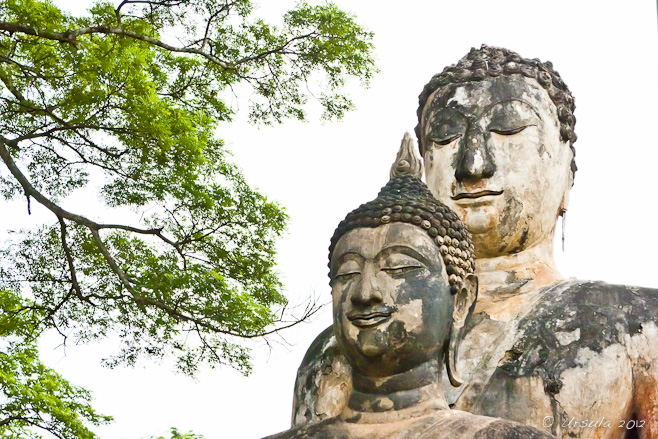
With an air of calm, two Buddhas preside over Wat Phra Si Rattana Mah (Wat Phra Prang), Si Satchanalai
Thailand is rich with the textures of life and history.
I’ve talked before about our recent visit to Sukhothai, or more properly, the UNESCO-listed “Historic Town of Sukhothai and Associated Historic Towns”. One of those “associated towns” is Si Satchanalai (or Sri Satchanalai, depending on whose transliteration you follow).
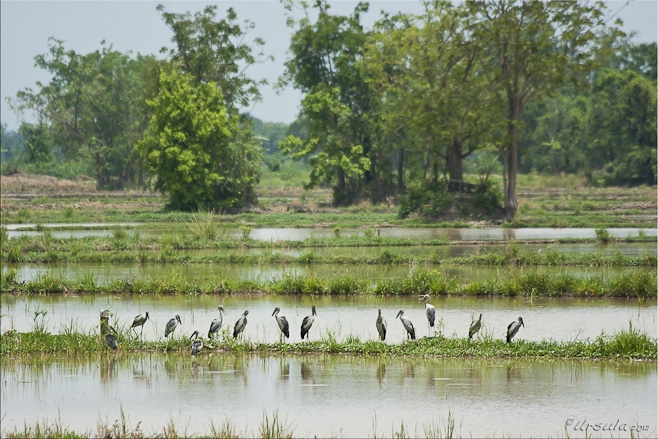
The trees and rice patties were full of birds as we drove north on country roads. Here, flocks of Asian Openbills perch in the rice fields.
Fifty-five kilometres north of Sukhothai along country roads flanked by fields and rice patties, the ancient city of Si Satchanalai on the banks of the River Yom is in a tranquil location. In addition to various ancient wats (temples), the park includes important archaeological sites where some of the world’s earliest celadon kilns have been uncovered and preserved. In the 14C, Si Satchanalai was the biggest ceramic producer in Southeast Asia, exporting its prized Sangkhalok pottery as far afield as Japan, China, Indonesia and the Philippines.
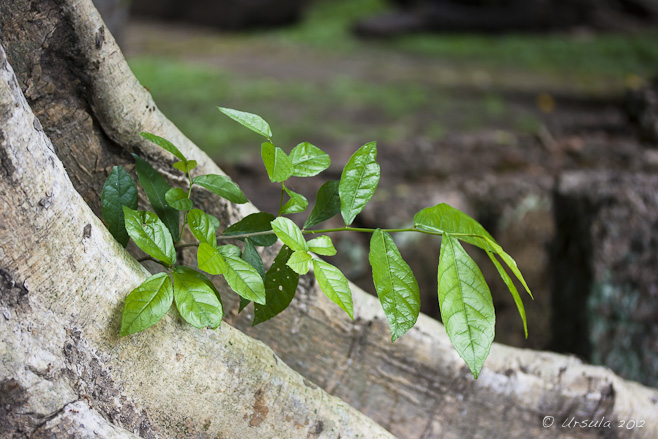
Old trunk; new growth. Wat Chedi Chet Theao
I was struck by the peaceful quiet of the grounds. I am not alone in actually preferring the somewhat understated ruins here to those of the better-known Sukhothai site.
The city and surrounds date back to the 6th century, when the inhabitants were producing tools, beads and terracotta. In the 12th and 13th century, the area was under Khmer control. While this has had little influence on the remaining buildings, the giant fig at Wat Chedi Chet Theao was reminiscent of Ta Phrom at Angkor.

The quiet of a giant ficus. Wat Chedi Chet Theao

Smooth growth; rough laterite bricks. Wat Chedi Chet Theao

Suggestion of a Buddha, Wat Chedi Chet Theao

Visiting monks add life to Wat Chang Lom
Many of the ruins date to the rule of King Li Thai (1347-1368) when several buildings were renovated or constructed.
After the death of King Li Thai, the city came under the control of Ayuttaya, before again becoming part of the Sukhothai kingdom in around the 15th century.

Elephants on guard: Wat Chang Lom (Rob)

Ruins on the green: Wat Nang Phaya

A newly ordained young monk or “nehn” travelling with his elders: Wat Nang Phaya

Wat Nang Phaya features laterite blocks decorated with early-Ayutthaya style stucco.
Thai temples are full of surprises. We climbed up the hill that houses Wat Khao Phanom Phloeng and Wat Khau Suwan Khiri to be assailed by a cacophony of chittering and the ripe smell of too many animals in one place. I thought it was monkeys or bats, until I looked to the tree-tops to find them full of water-birds: herons, egrets and stork – all squabbling for perching and nesting spaces.

Tree-tops full of cattle egret, with their golden nesting-head-plumage.

An egret and a heron share the tree-tops.

Asian openbill storks look too big for the trees they are sharing with herons.

Several nests contain eggs or chicks.

Not all the chicks make it; more than one chick lies on the ground around the temple.

Impromptu cairns dot the Wat Khao Suwan Khiri surrounds.

A dead leaf seems to illustrate the story of the temple history.
As the afternoon lengthened, we drove off the main Si Satchanalai site to another temple located close by, in the fold of the river. We arrived just ahead of the travelling monks who were visiting from a central province east of Bangkok and were greeted by a seemingly ancient man playing a simple stringed instrument and hoping for payment. Naturally, we obliged!

Elderly Thai Musician – Wat Phra Prang

Buddha – Wat Phra Prang

A senior monk poses for his picture. Wat Phra Prang

Ancient laterite wall: Wat Phra Prang

Giant standing Buddha – Wat Phra Prang

As if to remind us that all things pass – all things change – a Buddha sits with its head fallen.
Next door to the old temple ruins of Wat Phra Prang (Wat Phra Si Rattana Mah), new works are being undertaken to expand the new temple of the same name.

The worker on the foundations of the extensions at the new Wat Phra Prang, when asked, said proudly: “Pen khon sukhothai!”: “I am a Sukhothai person!” So, the past links to the future.
And the cycle continues.
Happy travels!
Photos: 21May2012


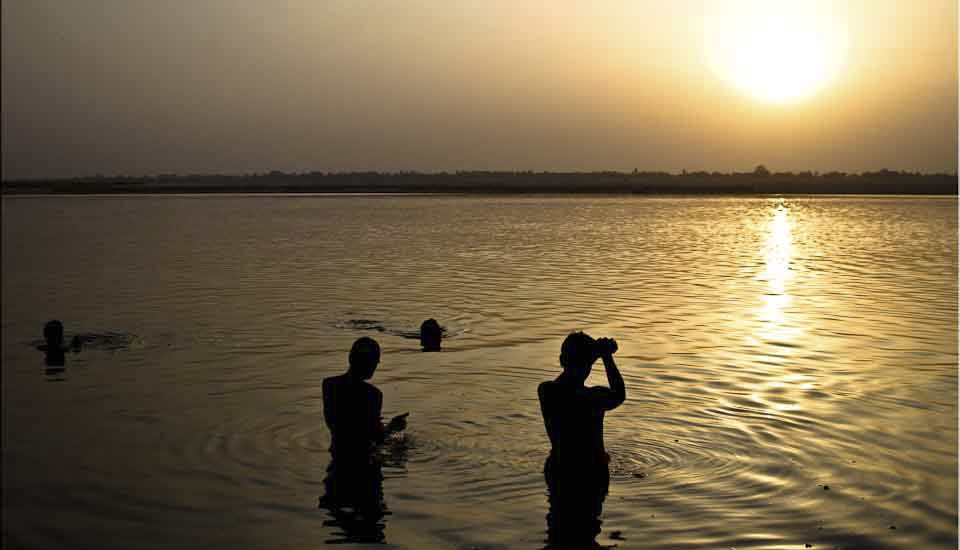

























.png)
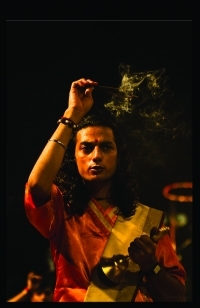
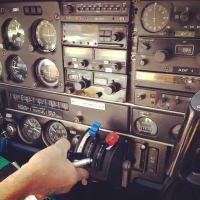
Very nice to see this back in your images. Thank you, Greetings Dietmut
Thanks, Dietmut! I’ll post the next Sukhothai installment soon. 🙂
lovely as always, you have certainly been to some amazing places and rich history abounds… thank you for sharing it 😉